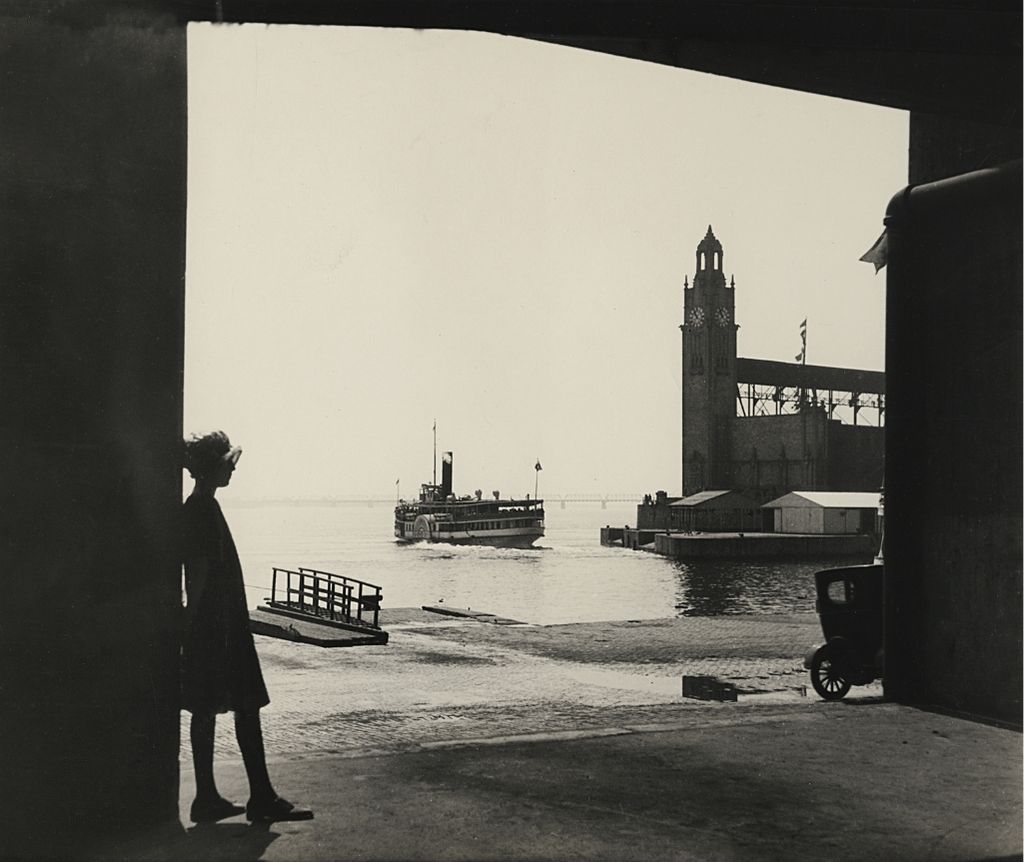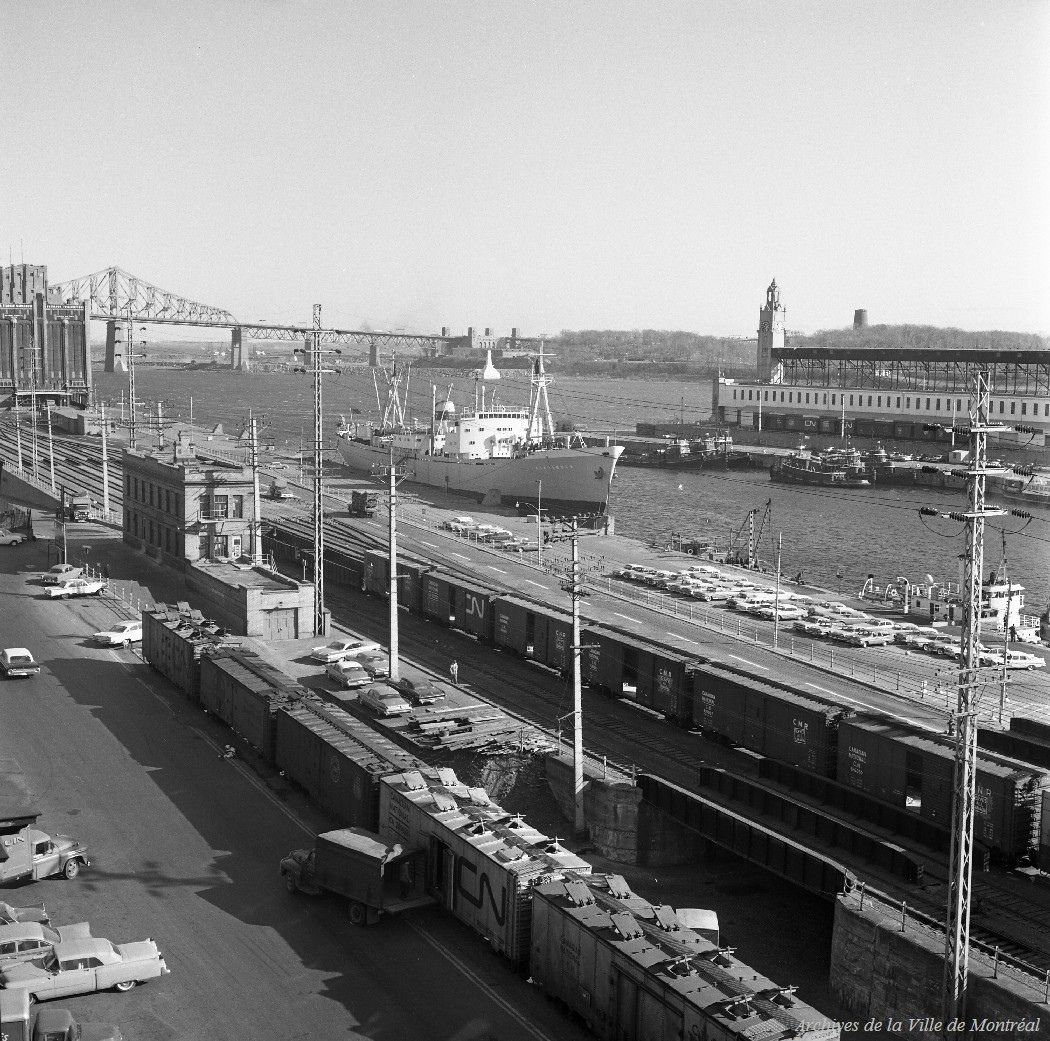Emblematic monument of the Old Port of Montréal, the Clock Tower has proudly stood at the end of Clock Tower Quay since the summer of 1922. We asked historian and UQAM professor Joanne Burgess to look back on the history of the monument and on what it represents today.
A hundred years ago, the annual activities report of the Montreal Harbour Commission, whose mandate was to manage the port and see to the development of its infrastructures, boasted of the recent completion of the Clock Tower. It was in fact at the end of the summer of 1922 that arrived the final pieces of the clockwork which ultimately gave the tower its name. For citizens at the time, the setting in motion of the clock in the spring of 1923 was the crowning achievement of the erection of one of Canada’s most elegant commemorative monuments.
Origins and Development of the Memorial Site
Known at the time as the Sailors’ Memorial Tower (or Tour des Marins in French), the design and construction of the tower reflect the particular political, cultural, and economic context of the time. The project got underway just as the First World War ended, a war characterized by tremendous loss of life. Montréal’s citizens —individuals, families and institutions alike, notably those of British descent— were unequivocally traumatized by the war. Numerous groups rallied around a strong will to pay homage to those who were lost soon giving rise to some of the first memorial monuments. The Montreal Harbour Commission was called upon to honour the courage and the memory of members of the Canadian Merchant Marine and the British Merchant Navy who were killed in combat. In light of its role in provisioning arms and food to Great Britain and its allies during the Great War, the Commission undoubtedly felt called by duty.
Within mere months of the end of the conflict, the Commission set out to build a memorial and, in October 1919, a block of granite marking the future location of the memorial’s commemorative plaque was unveiled by the Prince of Wales who would later ascend to the throne as King Edward VIII. Paul Leclaire, then engineering assistant for the Commission and graduate of the city’s École Polytechnique, was entrusted with the design of the monument. His vision was to erect a white 45-metre-tall tower in keeping with the Beaux-Art style. He planned for the tower to feature a set of bells (which never came to be) and four immense clock faces on each of the tower’s sides whose workings would be designed by the prestigious English clockmaker Gillett & Johnson. The monument’s commemorative plaque was placed on the tower’s east face looking downstream on the Mighty St. Lawrence. Leclaire’s tower design was in keeping with the times as other WWI monuments were also designed as towers and skyscrapers erected around this time also echoed this architectural form.
The Clock Tower’s design, and more importantly its location, also reflect the style of well-known monumental lighthouses marking the entrance of many important ports from the Alexandria of antiquity and the Roman Mediterranean to some of today’s port cities like Liverpool and Boston. Unsurprisingly, the Clock Tower was also given a beacon light.
A Site Bearing Witness to the Golden Age of the Port of Montreal
Beginning in 1919 and completed in 1921 and 1922, the construction and development of the Sailors’ Memorial Tower were part of a great port infrastructure project led by the Harbour Commission. The project’s most well-known achievement at the time was undoubtedly the Cold Storage Plant which was also inaugurated in 1922. Yet the Port of Montreal’s central purpose was grain storage. From the turn of the 20th century to the end of the 1920s, wheat and flour exports rose making Montréal one of the most important grain ports in the world and the second most important port in North America. This major expansion in exports and maritime vessel traffic exerted pressure on the port’s storage and transhipment capacity. This led to the development, between 1910 and 1916, of Victoria Quay (known today as Clock Tower Quay) whose purpose was to welcome seagoing vessels. On it was built a series of hangars as well as a system of conveyors tied to the enormous grain silos that dominated Montréal’s waterfront landscape.
This busy area of the port on the eastern tip of Victoria Quay —the very entrance of the Port of Montreal— was ultimately chosen to house the sailors’ memorial. As such, Paul Leclaire’s design needed to wield much ingenuity in giving it the solemn reverence it was due in an area bustling with activity and occupied by enormous machinery and buildings in full operation. Leclaire’s solution was to blend the tower with two other elements which, together, shielded away the more rudimentary functions of the site. Placed on the quay’s southeast, the tower concealed the conveyors and was extended to the north by a wall and a small 12.8-metre-high turret behind which the site’s hangars were hidden. The layout allowed the Clock Tower to dominate the entrance of the port and the landscape as viewed downstream from the city.
The Clock Tower Today
For decades, the Clock Tower served as guardian of the Port of Montreal and stood amidst intensive maritime activity. In the years following 1950, the port’s activities slowly began to migrate towards the east bringing about a decline in activity in the historic part of the site. In 1977, federal authorities chose to discontinue all major port operations taking place between the Lachine Canal and Victoria Quay and the Old Port's mission was radically changed. Silos, hangars, and conveyors were demolished and with them parts of the history of Montréal’s harbour. The area surrounding the Clock Tower was profoundly transformed and, in 1984, important restoration work began on the tower and its wall and turret. The memorial site was then opened to the public along with an interpretation centre and an observatory that offered visitors unparalleled views of the city and the St. Lawrence.
Across the entire waterfront, new landscape developments and new activities now help reconnect Montréal with its port. This new access to the riverside allows residents to acquaint themselves with the Clock Tower and its subtle elegance and rich history. Once a vital beacon for seafarers, the tower with its four clock faces now stands as an emblematic monument of the Old Port.
Joanne Burgess, professeure du Département d’histoire et directrice du Laboratoire d’histoire et de patrimoine de Montréal à l’UQAM.
This article is our translation of the text authored for us in French by Joanne Burgess.


